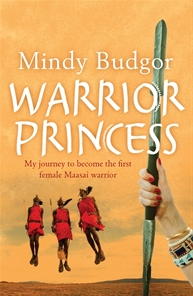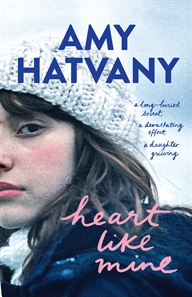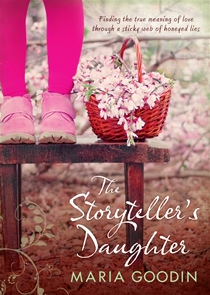Today’s post is a true triple-threat! One part review, one part author-interview and a give-away to sweeten the deal. Here’s what Carolyn thought of Charity Norman’s The Son-In-Law (Allen and Unwin)…
***
“My mother used to say her wedding day was like a fairytale. It was a blue and gold morning, and a million daffodils rippled beneath the city walls. She and my father were young, beautiful and crazy about each other.
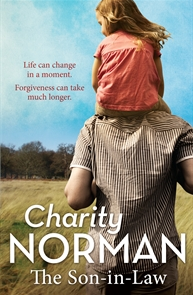 ‘Don’t let people tell you love isn’t like in the films, Scarlet,’ she said. It was one of those moments when she seemed to be surfing right on top of a foaming, frothing wave of happiness…
‘Don’t let people tell you love isn’t like in the films, Scarlet,’ she said. It was one of those moments when she seemed to be surfing right on top of a foaming, frothing wave of happiness…
She gave a little laugh, humming along to the jazz music she had playing on the stereo… For some reason, that evening is one of my clearest memories of Mum. She smelled of well, of Mum; her special sandalwood scent, and coffee and maybe wine. I’ve got one of her soft cardigans under my bed, and it still smells like her. If I press my face into it and shut my eyes, I can pretend it is her.”
The Son-In-Law is the latest novel by rising-star Charity Norman, and it tells the story of a family torn apart by a tragic episode, changing the course of the lives of three very young children. The transcript of a 999 call made by a ten year old girl opens the book – the account is very real and immediately had the hairs on my arm standing on end. I read the transcript again because I couldn’t believe where I was about to taken by this beautiful and powerful novel, a story that will stay with me for a very long time.
This is a story told from three points of view. The first being Joseph who kills his wife in the presence of his three young children; his oldest child Scarlet and their Grandmother Hannah who, with her husband become the primary caregivers to their grandchildren after this tragic event. Each narrator gives the reader a different perspective on the death of Zoe, a beautiful and charismatic wife, mother and daughter and on how they manage to carry on after such a sudden loss in their lives.
“I didn’t sleep that night. Not until three in the morning, anyway. I didn’t sleep the next night either, or the one after that, or any night in the days leading up to the court hearing. I felt more and more tired, but at the same time twitchy and tangled up.”
Before turning her skills to writing, Charity Norman practised as a high-powered barrister specialising in family law. This, combined with a colourful upbringing, has allowed her to draw on personal experiences, delving into issues of mental health, domestic violence and the devastating results these factors can have on families.
From the very outset of the story you know that you will be faced with difficult dilemmas when deciding what is right for each character. I found myself loving each person no matter how self-centred their motives seemed to be. The adult narrators in the story are at opposite ends of the argument, pulling Scarlet and her younger brothers from one side to the other. This pull naturally causes guilt in the young characters thus leading to disturbed behaviours and actions which made me, the reader feel incredibly sad for them. As much as I loved the adult characters, their selfishness is blinding and gets in the way, making them forget about what is right for the children. This is a central theme throughout this book, asking questions about what is the right and best outcome for this family?
“I wasn’t in a cheerful mood as we drove away. Far from it. I looked back as we turned out of Faith Lane, and I could see two lost souls standing on the pavement. They were holding hands, which was something they never used to do in public. I felt so guilty. I wanted Dad to turn the car around and take us back.”
The Son-In-Law has secondary characters who through kindness and wisdom offer support to this family. Their opinions are put forward in the form of letters and court transcripts providing a depth to this story. I personally have not had to deal with a tragedy of this magnitude and it only made me more grateful to the people who dedicate their lives to helping others through the family courts.
I can highly recommend this book to you. It had me sitting up until early hours of the morning because I needed to know the outcome for these powerful characters. Whilst I cried for three quarters of the book (something that I secretly enjoy) Charity Norman gave me hope that life can take a different course and carry on beautifully for people who encounter such a traumatic road block in their early lives.
I was fortunate enough to be able to ask a few questions of Charity Norman…
Before you wrote The Son-In-Law, I understand that you practised as a barrister, specialising in family law. ‘The Son-In-Law’ delves deeply into issues of domestic violence, family and mental health. Is your book based on one specific incident?
I think the short answer is no. Years ago I did act for the children in a case where the father had murdered the mother and was asking for them to have contact with him while he was in prison. His case was utterly different to Joseph’s – as I recall he had killed her in cold blood and was going to be in prison for a very long time – but I remember sitting there in court while he was in the dock at the back, and thinking about the rights and wrongs of contact for such a man. That may have sown the idea in my mind, but no more than that. The book is entirely fictional, and influenced by numerous experiences rather than just the one.
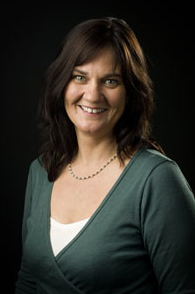 Was this a story that you wanted to tell for a while? Do you have more stories you wish to tell?
Was this a story that you wanted to tell for a while? Do you have more stories you wish to tell?
This story had been bubbling in a pot on my mental stove for a while, and seemed the right one to choose when I was thinking about what to write next. Yes, I have lots more stories that I’d like to tell!
Your novel often had me in tears as I sympathised with each character. How do you create such real emotion throughout the story?
Thank you – though sorry to make anyone cry! I don’t really have a conscious technique, but it helps me to take time to get to know my characters. I try to listen very carefully to each and walk in their shoes, really be that person in my head. It’s very like using empathy when you have a friend who’s in trouble – you listen to what they say – and also to what they don’t say – and you try to understand exactly what they are feeling. I do that with the characters. Then I write it down.
Scarlet showed considerable maturity for a thirteen year old? In your experience is this maturity normal for such a young person who has been through the life changing events that Scarlet had to go through?
Yes, I believe it is. To a degree, she’s taken on the role of carer for her younger brothers and found depths of maturity that she wouldn’t have had to otherwise. Of course, there are plenty of young children looking after even younger ones, for example in areas of the world where HIV has ravaged the population. They lose their childhoods even more than Scarlet has.
I do have a daughter who was Scarlet’s age as I was writing the book. She is definitely not Scarlet of course, but quite similar in terms of maturity, and I found it really helpful to know what a switched-on girl of that age might be thinking, saying and doing. At the launch of the book here in New Zealand, she read out the part of the panicking Scarlet in the prologue and I read the part of the emergency operator. I felt quite moved to hear her!
Why is it told through the first person for Scarlet and Hannah but not for Joseph?
Ah. I am so glad you asked me that! I spent weeks agonising about this. I wanted to make it very personal, so chose the first person for Scarlet and Hannah which I felt worked for them. Yet when I tried to give Joseph a first person voice, I found it just was not his voice. I think that’s because of who he is. He was always a more self-effacing type, not the sort who starts many sentences with the word ‘I’ – even more so after causing Zoe’s death, and the years in prison. He feels awful guilt and hides away on the moors. I just don’t think he wants to talk about himself. Oddly, I found this slight distance helped me to see him more clearly, rather than just seeing him as he sees himself.
Have you had much correspondence from readers who have identified with some of the major themes in this book? If so were they positive or negative?
Not so far, though I am very grateful to those readers who have written to tell me that they like it. So far nothing negative, but I know there will be some who feel I was too generous to Joseph. I had lots of interesting feedback after ‘Freeing Grace’, which was about adoption; and again after ‘Second Chances’, which was about emigration, drug addiction and a teenager who is in deep trouble. Many people have said they identified with those themes, especially adoption.
I loved this book. Thank you for writing it and thank you for taking the time to answer my questions. I will be singing its praises for quite a while I think.
Thank you very much for that, and for your thoughtful questions –much appreciated!
***
You’ve got a chance to win a copy of Charity’s book, courtesy of Allen and Unwin. All that you need to do to enter is email info@thatbookyoulike.com.au with the subject line ‘SON IN LAW’ and include your name and postal details. A winner will be chosen at random on 31.07.13 and notified by email.
Good luck!
If you’d like to find out more about The Son-in-Law, you can do so here…
Join us: Facebook and Twitter
Sign up for TBYL Book Club here…
